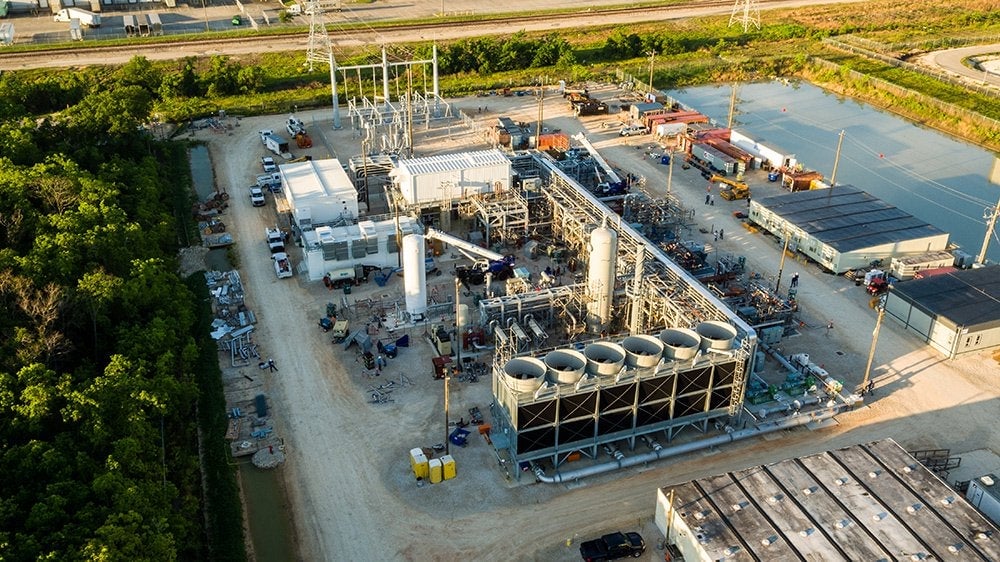A radical US startup has successfully fired up its zero-emissions fossil-fuel power plant
The US energy startup, Net Power, has announced that it has successfully fired up its natural-gas plant in La Porte, Texas. In the age of climate change, when reducing emissions should be our primary goal, it may sound odd to celebrate the launch of a fossil fuel-burning plant. But Net Power is unique. Its new facility is the first fossil-fuel power plant that promises to capture all its emissions effectively at zero extra cost, and on May 30 it passed a major milestone in the step towards commercializing a climate-friendly technology.


The US energy startup, Net Power, has announced that it has successfully fired up its natural-gas plant in La Porte, Texas. In the age of climate change, when reducing emissions should be our primary goal, it may sound odd to celebrate the launch of a fossil fuel-burning plant. But Net Power is unique. Its new facility is the first fossil-fuel power plant that promises to capture all its emissions effectively at zero extra cost, and on May 30 it passed a major milestone in the step towards commercializing a climate-friendly technology.
The underpinning technology, called carbon capture and storage (CCS), has existed since the 1970s. But it is only recently that climate change-mitigation models have begun integrating large-scale CCS into their plans. Even though renewable energy, such as wind and solar, are getting cheaper by the day, the world still gets 80% of its energy from fossil fuels today. And because we have been postponing the date when the world as a whole will start to cut emissions—2017 set a new record for global emissions—we don’t have the luxury of waiting for the energy transition to happen on its own pace if we want to avoid missing the Paris climate goals. CCS is a bridging technology to help us avoid catastrophic climate change.
Net Power’s $150-million pilot plant near Houston makes use of the Allam Cycle, named after its inventor Rodney Allam. As Quartz previously reported, here’s how it works:
In a small turbine, a combustor burns natural gas and pure oxygen—producing only carbon dioxide and water—in a chamber that’s already full of supercritical carbon dioxide at high pressure and temperature. That’s no small feat; it’s like trying to light a match while someone else is doing their best to put it out with an extinguisher. The combustion produces additional carbon dioxide, some water, and lots of heat. This hot, high-pressured mixture is then passed through a gas turbine, where the pressure turns a shaft to generate electricity.
The slightly cooled mixture exits the turbine, then is separated into parts. The necessary amount of carbon dioxide is compressed to become supercritical again and added back to the initial chamber, keeping a steady amount of the gas circulating through the system. The remaining, pure stream of CO2 can be buried underground. And the (clean) water is dumped. The heat transfer in this process is so efficient that for each unit of energy trapped in natural gas, the Allam cycle produces 0.8 units of electricity (compared to 0.6 units produced in the most advanced natural-gas power plants).
You can read more in our feature reported in September, when Net Power was in the final stretch of construction and testing. That has now concluded, albeit a few months late, and the full cycle can now be run, according to Walker Dimmig, a principal at 8Rivers, the technology firm that co-owns Net Power with energy firm Exelon Generation and engineering firm McDermott International. The plant is not yet producing power; Dimmig says that should happen later this year.
CCS technology can work on traditional fossil-fuel power plants, as seen at Petra Nova in the US and Boundary Dam in Canada, which together capture more than 2 million metric tons of carbon dioxide per year. But in those cases, capturing the emissions reduces the amount of energy produced for each unit of fossil fuel burned—and thus makes the process expensive. Net Power is betting that the Allam cycle’s higher efficiency will more than compensate for the energy lost to the carbon-capture process.
Better still, in the past few months, the US government has passed the FUTURE Act, which provides tax credits of up to $50 for each metric ton of emissions captured and stored by a power plant or chemical factory. “It makes our economic case stronger,” says Dimmig.
If the company can get the pilot plant fully operational and producing energy—it can generate 25 MW of electricity—Net Power will scale it up to to a full-size power plant that can produce up to 300 MW of electricity, as soon as 2021. And though the pilot plant as a testing facility won’t be burying its captured emissions, the scaled up commercial plant would. Dimming wouldn’t give details, but says the company is currently in conversations with investors and partners to make that happen.